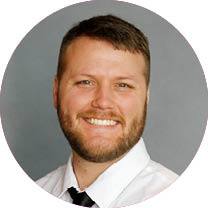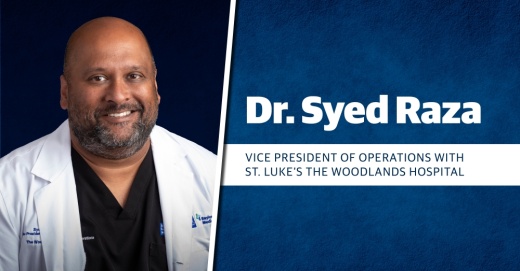Dr. Syed Raza, vice president of operations with St. Luke’s The Woodlands Hospital, spoke with Community Impact Newspaper regarding the monoclonal antibody treatment being used at the hospital’s campus.
The treatment is being implemented in the area in an effort to reduce the number of hospitalizations from coronavirus.
Answers have been edited for length and clarity.
Q: Could you describe the infusion center?
A: It is a collaboration between Montgomery County, St. Luke’s, HCA [Healthcare], amongst others. ... What we are doing there is giving infusions of monoclonal antibody therapy to people that qualify. It is an IV infusion that is used to specifically target coronavirus, and it has been shown to be effective in a certain segment of the population, namely those within seven to 10 days of diagnosis or symptom offset, those who are [age] 65 and older, those who have a body mass index of 25 or greater, pregnant folks, those with chronic kidney disease, diabetes and immunosuppression. We are trying to do it in a multifaceted way. .... We have opened this clinic up; it is open from 8 a.m.-6 p.m. seven days per week, and patients should be sent by their physicians or providers with positive test results.
They basically go in, and it takes about an hour to mix the medication, an hour to infuse it, and an hour to monitor them and make sure they have not had any side effects. This has been successful for a 70% reduction in hospitalizations and death that the studies have looked at.
Q: What does the treatment do?
A: The monoclonal antibody is designed to attack the spike protein on the COVID-19 virus. The spike protein helps the virus attach to our cells, and then the virus injects our cells with its DNA and essentially makes our cells COVID-19 factories. What the antibody does [is] that it targets those spike proteins, preventing the virus from attaching to our cells and stopping that viral factory. We [at St. Luke’s] have given it to several hundred people in Montgomery County, and what we have seen is many of these people avoid hospitalization. The caveat is you have to catch this early. ... The earlier the better. People that have low oxygen levels or are so sick that they should be hospitalized do not qualify; it does not help that subset.
Q: This is not a cure for COVID-19, correct?
A: It is not a cure, but it will ease the symptoms and hopefully prevent some of the complications, specifically the pulmonary complications.
Q: Do you have an estimate of how many people you can treat with this method?
A: We have a multilayered set up, so we can probably do close to 80 and ultimately get up to 120 every day in the infusion clinic. The [Montgomery County] Office of Emergency Management also has mobile units that are going to people’s homes. We are trying as many ways as we possibly can to reach out to the community and get people treated.
Q: Is this free or covered by insurance?
A: It’s free.
Q: Is there anything else you feel people should know about this treatment?
A: It targets the spike protein, which is the same spike protein that both of the mRNA vaccines target, so a better way would be to get vaccinated so you do not need this treatment. [A person receiving this treatment] can still be vaccinated after 90 days.





